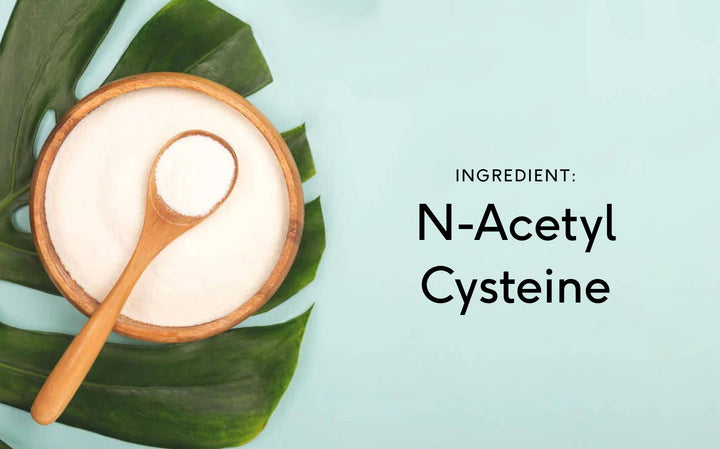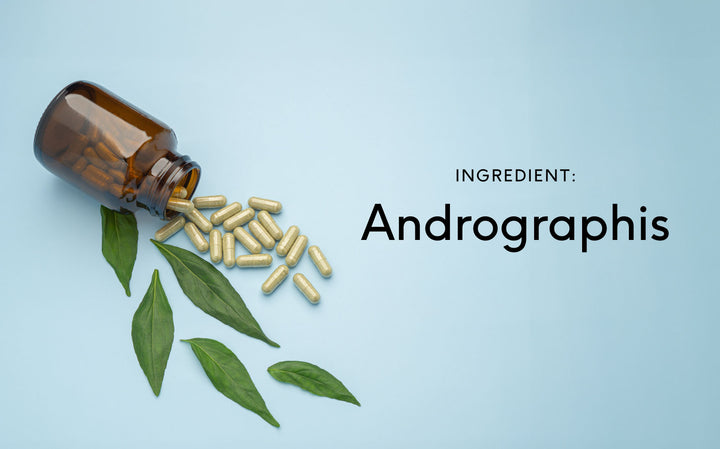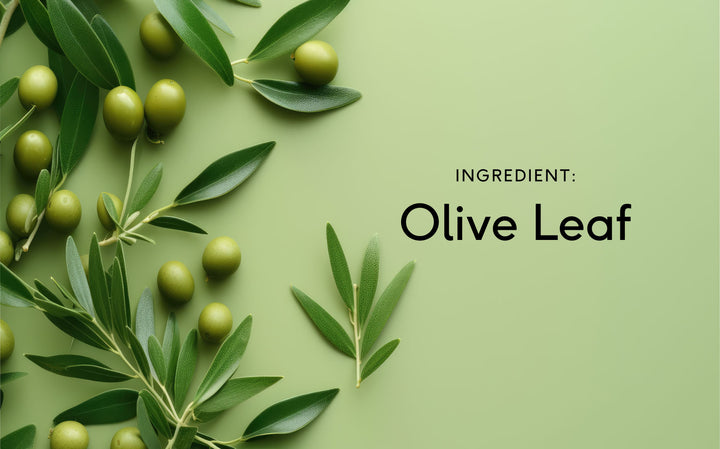27 Health Experts Reveal The Danger Of Cheap Multivitamins
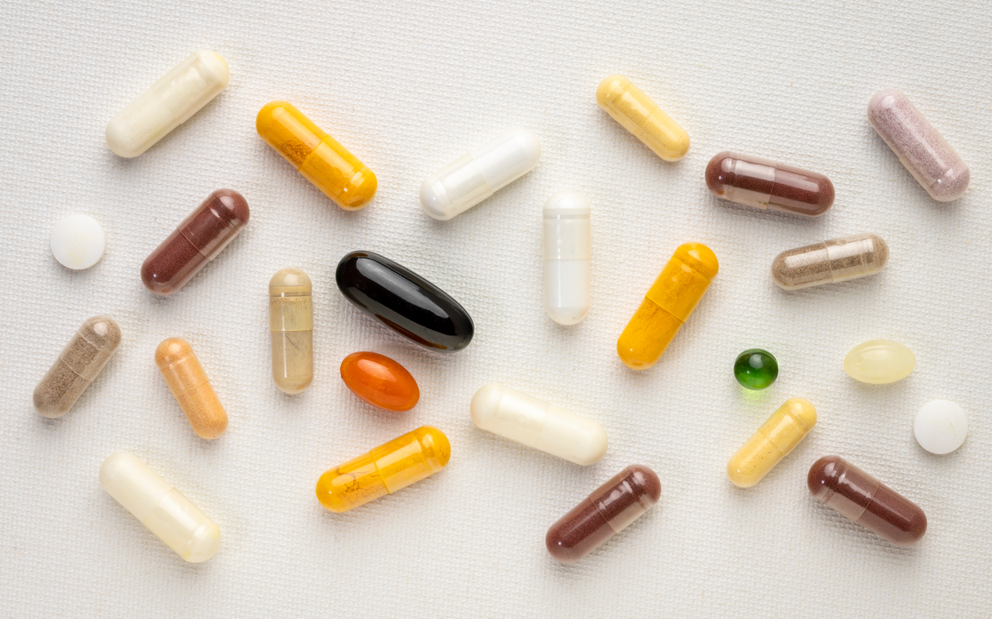
Cheap multivitamins are made from low-quality ingredients that make them less effective and even potentially dangerous for your health in the longer-term. Unfortunately, nowadays it's very difficult to take all the daily nutrition that you need only from food.
For this topic, we reached out to 27 health experts and asked them the following question:
Are there any things that make regular multivitamins unhealthy (things like anti-adherent, disintegrants, lubricants, caking and binding agents, etc.) and what is their impact on consumers’ health?
In simple terms - "What makes cheap, commonly found multivitamins unhealthy?"
Taking vitamins is a useful thing but not all supplements are created equal.
Sometimes people wonder why they should pay more for a respected brand instead of choosing their cheaper version. The reality is that the added price doesn't always come entirely from the marketing expenses. The scientific research and high-quality ingredients are what should matter for the consumer.
Dr Christina Bjorndal - Natural Terrain

In practice, I find some things make regular multivitamins unhealthy:
1. Many supplements contain the wrong form of a nutrient. Many nutrients come in different forms, and some are better than others.
One example is Vitamin B12 which comes in three forms – cyanocobalamin, hydroxocobalamin and methylcobalamin – and the most absorbable form is methylcobalamin. The worst form is cyanocobalamin and that is what is commonly found in multivitamins.
2. Many are taking the wrong dose of a nutrient. It is a common occurrence for a patient to dismiss a nutrient as ineffective. When I question the dose they were taking, 99% of the time, they were taking too low of a dose.
There is an anti-vitamin spin to most media reporting in vitamin research and the message they are promoting is that vitamin therapy does not work. This is nonsense.
There are thousands of nutritional research studies that provide evidence that vitamins help prevent and treat serious diseases, including mental illness and heart disease, when the nutrients are supplied in sufficiently high doses. This is the key: the correct dose is required.
3. List of non-medicinal ingredients – The other day a patient brought in a garlic pill that she was taking for me to assess. One of the ingredients on the label was hydrogenated oil.
I was shocked! With all the bad press about the dangers of hydrogenated oil and trans-fats, why would it be in a supplement? Yet, there it was!
It is important to read labels particularly the list of non-medicinal ingredients.
4. Breakdown/Absorption: Another concern with supplements is whether you are absorbing the nutrients you are ingesting. For you to do that, you have to be able to break the supplement down.
As mentioned, I prescribe professional quality supplements that are mostly powder or vegetable capsule-based and we rarely prescribe hard tablets because they are difficult to break down.
Veronica Parker

Natural fillers and binders do exist: they just aren't used all the time due to the cost increase of using high quality, safe products.
Excipients are the “other” inactive ingredients in vitamins which don’t contribute any nutritional value. Also, they can often be dangerous or cause harm upon ingestion. These often include binders, fillers, flow agents, disintegrants, colouring, and preservatives.
Binders: They are like the glue that helps bind or hold together the ingredients in vitamins.
Fillers: These ingredients act as bulking agents by adding volume to the size of the capsule.
Flow Agents: Ensure capsules don’t stick to the machines during the process. Some companies include anti-adherents to decrease the friction of capsules as they move through the machinery.
Disintegrants: Allow capsules to break down and dissolve in your digestive system. They release the active ingredients to be absorbed by your body.
Colouring: Is added to improve the appearance of vitamins.
Preservatives: Are sometimes included to increase the shelf life of products.
You might want to choose to avoid the following ingredients while taking vitamins:
-
Magnesium silicate is utilised as an anti-caking agent or filler. It can cause issues when ingested and lung problems when inhaled.
Magnesium Stearate is used as a binder or flow agent. There is controversy about this ingredient being safe for human ingestion. - Studies conducted in mice have shown a decrease in T Cell production of the immune system. It could also contain GMOs. It is up to you to choose to eliminate this ingredient from your vitamins until more studies are done with it.
- Titanium Dioxide is used as a colourant. It can cause small intestine, lung inflammation and possibly cancer.
- Carrageenan is a vegan thickening agent. Some scientific studies have shown this ingredient to cause inflammation of the digestive tract and possibly malignant tumours.
- Potassium Sorbate is usually utilised as a food preservative and is synthetically produced. Some people experience sensitivities or allergies when digesting this ingredient.
Ultimately, you have the power of choice and it's up to you to choose what is best for you!
Bart Wolbers - Nature Builds Health

Most store-bought multivitamins use low-quality ingredients or very high dosages. Both the wrong ingredients as well as vitamin overdoses can cause side effects such as nausea.
The wrong vitamins
Vitamin B12, in the form of "cyanocobalamin" instead of the more useful "methylcobalamin" is similar. Cyanocobalamin can cause an upset stomach, itching, rashes, stomach upset, and you guessed it: nausea.
Another example are very high doses of vitamin B6 that are commonly included in multivitamins. You only need that vitamin in doses of 2 milligrams per day at max. Many supplements contain 25 to a whopping 500 milligrams, which can cause problems in the peripheral nervous system in the long run. Appetite issues, gut upset, and nausea are other frequent side effects.
The wrong types of minerals
Minerals that are added to multivitamins such as iron, can also cause gut irritation. Iron from supplements is not necessarily absorbed more poorly than when it's coming from food, but the specific forms used in multivitamins can be problematic.
Many people also already have an iron overload in their body, so additional iron is not recommended.
The same is true for magnesium. One form of magnesium, called "magnesium sulfate", can, for example, cause diarrhoea and gut upset. "Magnesium oxide" is also frequently added, but absorbs only for 4%. Highly absorbable types of magnesium such as "magnesium glycinate" or "magnesium orotate" do not cause such problems.
Cheap fillers
Many cheaper multivitamins contain colourings for cosmetic reasons: dyes and artificial colourings are examples. Even the FDA has concluded that colouring sometimes has negative effects, such as creating hyperactivity in children.
Titanium dioxide is one example of such a colouring agent. Titanium oxide is linked to digestive issues and lung problems.
Additionally, substances such as "magnesium silicate" are sometimes added as well. That compound is commonly known as "talc". Talc is inexpensive and acts as an anti-caking agent
Solution:
The solution to the problem is to buy high-quality supplements that do not contain cheaper vitamin and mineral forms.
It's very difficult for individual consumers to pick out the right multivitamin though. To make the right choice, you'd need to have knowledge of all the different properties of all the forms of each specific vitamin and mineral, which takes months if not years of learning.
The best solution is, therefore, to search online for reviews of high-quality multivitamins that have been peer-reviewed by medical experts. High-quality multivitamins are not that expensive, but if you're choosing the cheapest option you probably get what you pay for.
Dr Laura Stix

1) Many cheap products contain inactive or poorly bioavailable nutrients. A common and very prevalent issue are supplements that contain a form of B12 call cyanocobalamin.
This form of B12 is inactive, very poorly absorbed and once absorbed must be converted into the active form methylcobalamin, which is typically poorly converted, and even more so in those with genetics that limit that pathway.
What this means is that not only are cells not obtaining the bioavailable form that they need to function, but blood testing will falsely suggest that there are sufficient B12 levels in the body.
B12 is a common deficiency due to poor gastrointestinal health and poor diets (and the rampant use of antacid medications) which can impact various systems in the body, particularly affecting energy levels and neurological health (as the most common deficiency symptoms are low energy, numbness/tingling and mental health effects).
Unfortunately, this fact is not common knowledge so consumers purchasing a cyanocobalamin B12 supplement will be under the false belief that it is benefiting them when in fact it is arguably harming them.
I advise my patients that if they have purchased a stand-alone B12 product that is cyanocobalamin rather than methylcobalamin to in fact just throw it out.
Another even less known concern along this same vein are supplements that contain folic acid rather than the active form methyl-folate. Though widely used, folic acid is concerning because it's conversion to active folate in the body is very poor and can harm the body.
Folic acid, while similar in structure, is not the same as the natural folate found in foods used by the body, and in fact, it will preferentially bind up the receptors for active folate, leaving it difficult for the active form to even access the receptor sites.
Folic acid has no benefit in the body until it is converted into the active form and not only does it steal away the receptor sites but also preferentially binds to the transport proteins as well.
If inactive forms of B12 and folate are ingested, this limits healthy production of red blood cells, DNA synthesis, and build-up of homocysteine which is a marker for increased cardiovascular disease risk.
2) The non-medicinal ingredients in common drugstore multivitamins are concerning as well. In pulling up the ingredient list of one of the most common multivitamins on the market to name a few of the most concerning: FD&C Yellow #6, Sodium Lauryl Sulfate, mineral oil, hydrogenated soybean oil.
It can be argued that in small doses there isn't a "concern" but when the fundamental purpose of a multivitamin is for health promotion, these ingredients are completely counter to that intention.
Professional line products never contain these additives which indicates that they are not required, however, their use likely makes them more cost-effective.
We know trans fats (ie: hydrogenated soybean oil) promote cardiovascular disease, that mineral oil is a petroleum-based product and a toxin, just like SLS is a toxin and rarely is colourant is ever health-promoting; FD&C Yellow#6 may also be a petroleum-derived product.
3) The fillers and non-medicinal ingredients further compromise the bioavailability of the multivitamin by the mere fact that it can be incredibly difficult to break down.
Particularly in more senior populations who have relatively more reduced digestive capacity yet an increased need for nutrients, these common multivitamins can pass right through the digestive system and be passed in the stool. This is where the term "bedpan bullets" came from, with nurses who observed the intact multivitamin.
The harm therefore comes in the way of not supplying the nutrient load expected and not meeting physiological and metabolic needs for health. Every system of the body can be impacted since vitamins and minerals are essential co-factors in a myriad of metabolic pathways.
Given the combination of an increased environmental load of chemicals and toxins, and a decreased nutrient load in the plants grown and processed foods consumed (approximately 30-40% reduction of nutrients even in organically grown vegetables), there is a necessary increased need for nutrient repletion in this day and age.
Selecting a good quality multivitamin that can both offset and support the increased needs of the body is more important than ever.
Marla Gates - Organic 4 Greenlivings

- Are multivitamins good for you and are they safe? Before taking any multivitamin or supplement you should always consult with your healthcare provider to make sure it is safe and that it is something you need.
- Many supplements can interact with other medications and even with other supplements and cause a very unpleasant and even dangerous reaction. Multivitamins have so many vitamins and minerals in that you don't need and instead of helping you it can build up in your body and become toxic.
- Vitamins such as A, D, E, and K are all fat-soluble. If you take high doses of these vitamins for an extended period they can build up in the body and become harmful to you unless you have a deficiency of them.
- Too much vitamin A may cause liver damage, joint pain, vision problems and other numerous problems.
- Too much Vitamin D can cause heart problems.
- Too much Vitamin K may lower blood sugar levels and other health issues.
Many multivitamins have in fillers and unsafe and toxic ingredients that are such as:
● MSG - "natural flavours," term often used
● Magnesium stearate or stearic acid, which are toxic flowing agents
● Heavy Metals and Chemicals
● Maltodextrin that is made from GM corn
● Ascorbic acid is vitamin C which is made from GM corn
● Artificial food colouring
● Titanium Dioxide
● Soy Lecithin made GM soy and any hexane extracted additives (this is unregulated and usually comes from China)
● Mono and Diglycerides
Take Vitamins that that follow these standards:
● GMO-free vitamins or Organic
● Truly natural made from natural whole food source
● From the reputable company with a track record of highest quality of processing and manufacturing
● Some good research data that you can track for
● Using a third-party lab to test for contaminants, toxins, and proper dosage
● Good Manufacturing Processes (GMP) certifications
When taking any supplement make sure you read labels carefully, do your research, make sure it is a reputable company, and don't by cheap vitamins or supplements. They are usually made in a lab chemical altered.
Isn't your health worth taking the extra time to eat healthy as well as make sure that you are taking the vitamins and supplements that your body needs?

We take vitamins so that we can stay healthy, but many people don't realise that low-quality vitamins can do more harm than good.
Low-quality supplements often contain toxic fillers and binders that are bad for your health and wellbeing, minimising the beneficial effects you think you'll be getting from the vitamins.
Not only do low-quality supplements have fillers, they oftentimes also lack real nutritional value.
A rule of thumb to use is to look at the ingredient list: if you can't pronounce something in the supplement, you probably shouldn't be taking it.
Another thing to look out for is food colourings. Many common food colours are known to be toxic, have been linked to ADHD, aggressive behaviour and hyperactivity, and can even disrupt proper brain function.
Lastly, be aware of the ingredients that come from GMO crops. Maltodextrin and ascorbic acid most often come from GMO corn (you know, the corn that is genetically engineered to have pesticide in the corn itself, making it toxic to the bugs that eat it).
You can avoid genetically modified ingredients of any kind by buying organic or non_GMO project verified supplements.
Dr Tarah Freyman - Beyond Family Medicine

Cheap multivitamins are likely to contain toxic elements and be contaminated with heavy metals from raw materials sourced from areas with possible water, air, and soil pollution or questionable agricultural practices. There's also risk for product contamination during transport or during processing when supplements may be diluted or adulterated with fillers or other additives.
Another concern is the use of excipients, the non-active ingredients in any given supplement, which are used in the manufacturing process to aid in product stability, bio-availability, appearance etc.
These ingredients theoretically must be GRAS (generally recognised as safe) but may include unwanted substances like GMO soybean oil, modified cellulose gum, chemical sweetening agents like aspartame, and more.
Health risks include allergic reactions and potential for interactions with other drugs the patient may be taking. Potential microbial contamination poses a risk for infectious disease.
There are also concerns involving carcinogenic risks, neurologic risks, and potentiation of other chronic diseases which may impact long-term health and quality of life.
Dr Kelenne Tuitt

Excipients is the fancy word for fillers. These are additives used to formulate medicines. They include preservatives, diluents, binding agents, and colourants to name a few. Most are not harmful; however, they do have pharmacological activity and can cause side effects. Below are a few examples of excipients found in multivitamins.
Colourants
Certain colourants may cause hyperactivity in children. Some colorants that can cause this are allura red, carnosinemia or quinoline yellow. If you notice this symptom with certain medications, you can ask to have it formulated without colourants.
Lactose
Lactose can be used as a filler to bulk up supplements. Lactose intolerance occurs in patients who lack the intestinal enzyme lactase. You can present with abdominal bloating, cramping and diarrhoea. These symptoms are rare but can occur if you are severely allergic.
Arachis Oil
Do you have a peanut allergy? If your medication has arachis oil this is derived from peanuts. Though used in small amounts, those with severe peanut or soy allergies should avoid medications containing this derivative.
Preservatives
Preservatives such as chloroform, parabens, benzoates, sorbates and sulfites should be avoided in children due to potential exacerbation of hyperactivity and possibly death.
Sweeteners
Sweeteners are used to formulate liquid medicines. These contain glucose, sucrose and may cause dental caries or increase blood sugar levels in diabetics. Sorbitol is a sweetener that also acts as a laxative and can cause diarrhoea.
Some have controversial ingredients such as silicon dioxide and corn maltodextrin. Though there are studies in animals that have shown an increased risk of cancer and organ damage there have not been any links to these adverse events in humans.
In summary, the more natural your multivitamin is the safer it is for you and reduces the risk of developing adverse reactions.
Dr Robert Thiel - Doctor’s Research

Although multi-vitamin supplements should only contain foods, very few are actually 100% food. Some multi-vitamin supplements contain various artificial colours (including titanium dioxide, which is also sometimes used as a 'filler'), which may be involved in health and behavioural problems.
Others can contain hydrogenated trans-fatty acids which pose health risks. Sometimes as a filler or anti-caking agent, magnesium silicate is used (it is similar in composition to asbestos and can cause lung problems when inhaled).
Unnecessary binding agents and other chemicals are often found in supplements. A lot of supplements use things like sodium starch glycolate as their major disintegrant: since this ingredient is made from starchy foods, it can have negative effects for people who have gluten intolerance or mycotic infections.
But probably the biggest problem, overall, is that most multivitamin supplements contain "nutrients" in chemical forms that are NOT found in nature.
Chemicals such as cupric sulfate and boric acid can be present in many best selling supplements and some believe they can cause DNA damage and birth defects. We recommend consuming supplements whose nutrients are 100% food.

Vitamins and supplements are not regulated by the FDA when purchased from random retailers - even well-known retailers such as GNC, CVS, Vitamin Shop - they can be full of literally all substances you mentioned and more, including yeast, pesticide residue, benzopyrene, residual solvents, salmonella, etc.
As a chiropractor, we see people on x-rays who took “all-natural vitamins” two days prior, and they are still travelling through their intestines undigested.
You want supplements that are researched, third-party assayed, medical-grade products!
In short, the disadvantages are:
- not regulated
- full of contaminants and very small % of the actual product you want
- bioavailability could vary and be completely ineffective
Dr Yelena Deshko - Timeless Health Clinic

While most multivitamins sold in drugstores offer the "one-a-day" type dosing, this strategy may not be optimal for absorption. Unfortunately, many people are not able to properly digest these tablets to extract all the nutrients due to decreased stomach acidity. This is especially common in the elderly and those taking antacid medications.
Another common problem with multivitamins is the presence of Vitamin A and beta carotene. Vitamin A and beta carotene are fat-soluble and therefore have a higher potential to cause liver damage if taken in excessive amounts.
High doses of vitamin A are also known to cause birth defects if taken by pregnant women. However, even lower doses have been shown to increase cancer risk in smokers and those who consume alcohol excessively.
When it comes to getting your recommended daily intake of Vitamin A, its best to stick to food sources such as carrots, sweet potatoes and other red and orange vegetables.
Vitamins and minerals all have various chemical forms, some of which are more absorbable than others.
An example of this is vitamin B12, which can typically be found in 3 various forms: cyanocobalamin, hydroxocobalamin, and methylcobalamin. Cyanocobalamin is synthetic and cheapest to produce, therefore this is the one most commonly found in multivitamins. However is it less absorbable to the body.
For best absorption, look for a multi with either methylcobalamin or hydroxocobalamin as the sources of B12. A similar scenario is true for both folate and Vitamin E. When reading the label folate should appear as "5-MTHF", and Vitamin E as mixed "mixed tocopherols".
If this sounds like a daubing task, as your Naturopathic Doctor to recommend a product that's best for your needs.
Many brands of multivitamins often contain artificial colours, flavours and other various unhealthy ingredients such as polyethylene glycol and hydrogenated oils. Always make sure to chose professional brands that have undergone third-party laboratory testing.
The supplement label should clearly state that the product does not contain preservatives, artificial flavour or colour, yeast, soy, gluten or sugar as these can trigger sensitivity reactions in many people.
Amanda Sylvie - Wellnicity

Supplements are not regulated strictly as pharmaceutical medication and there have been many industry discrepancies over the years.
Consumers face issues buying supplements over-the-counter, buying supplements out of convenience stores, at online retailers like Amazon, and buying supplements because a good-intentioned influencer such as a family member recommended it.
Nearly 800 dietary supplements sold over the counter from 2007 through 2016 contained unapproved drug ingredients. What does this mean for the consumer?
Potentially harmful active pharmaceuticals continue to be found in over-the-counter dietary supplements. There is also a lot of discrepancy with the quality of over-the-counter supplements.
While integrative pharmacies may carry a selection of professional-grade supplements most pharmacies carry lower quality supplements.
If a consumer is in the UK, The MHRA most likely has similar standards to cGMP from the United States. In the United States, The Food & Drug Administration upholds a standard called cGMP (Current Good Manufacturing Practices) which consist of guidelines to a process that assure the label of a supplement is accurate in identity, strength or dosage, composition, quality, and purity. cGMP also ensures the safety and effectiveness of products.
So while some antiadherents, binders, disintegrants, lubricants, caking and binding agents might be unhealthy they may still be “healthy enough” to be approved.
Therefore, individual health concerns should be taken into consideration when choosing a vitamin or supplement to see if these ingredients or even the main ingredient will cause any problems.
Hearing a customer say they want to take a particular nutritional supplement because their “friend, neighbour, mother and/or cousin is taking it” is like nails on a chalkboard to a Dietician and/or Nutritionist.
The caveat of course if they and their influencer (mom, dad, brother, sister, friend, cousin, or others) have the same health goals and same health history. There can be many dangers of selecting a supplement because a well-intentioned influencer told you “it’s great.”
When choosing what supplements are right for your unique body chemistry medication use, health history and health goals need to be considered by a professional such as a Wellnicity Clinician.
Also, online retailers raise the risk of counterfeit products - which in turn have a higher risk of having unhealthy ingredients or ingredient ratios. Online shopping on Amazon is becoming our go-to for anything and everything from cookbooks to dog food to sofas.
But buying supplements at online retailers including Amazon, Walmart and eBay can be risky business as all have faced surges in counterfeit shops repackaging knock-off supplements.
Jerrica Sweetnich - Revitalize

I think the main issue with cheap multivitamins has less to do with the binders and more to do with the actual supplement.
There's a huge misconception that the supplement industry isn't regulated, it is! The problem is, there are standards that supplement companies are supposed to abide by, but the FDA doesn't check every single company unless there is a complaint.
So, some supplement manufacturers will cut corners and either not put the actual ingredients in the supplement at all, or put a much lower amount and thus leading to a low-quality product.
Another problem with cheaper multivitamins is that many of the vitamins are in the poorest absorbable form.
Dr Will Cole

With so much information online and so many supplement brands to choose from, it's difficult to know what option is going to be best for your health.
The most important thing to look for is purity of ingredients and only go with supplements without added fillers, colours, or preservatives because these can continue to perpetuate inflammation and symptoms for those with chronic health problems.
Additionally, it's also important to only choose brands that provide information on their ingredient testing and sourcing.
Even if the supplement doesn't contain any fillers, if the ingredients aren't pure or organic they could still have been exposed to toxins that you are therefore ingesting.
Dr Kim Peirano - Lion’s Heart Wellness

While some consumers believe that common, inexpensive multi-vitamins and supplements might be ineffective, the consensus is that they are still safe.
In my experience as an Acupuncturist routinely educating patients on the use of dietary supplements and vitamins, my biggest concern is always drug-herb or drug-supplement interactions and supplements that are poorly produced which often contain contaminants and do not contain the correct dose of active ingredients as listed on the label.
When multivitamins are formulated poorly without proper acknowledgement of how the vitamin will break down in the body and be absorbed, another issue arises where the components of the multivitamin serve as antagonists toward each other producing the opposite of their intended effect for the consumer.
Certain formulations of multivitamins and supplements may produce oxidative reactions in the body, the exact opposite of their intended effect via multivitamin-mineral interactions.
While it’s likely that the supplement simply does nothing for the consumer, the worst-case scenario with sub-par formulations is that the vitamins may cause harm to the patient.
In cases of drug-supplement interactions this detrimental effect can be quite severe, St. John’s Wort, for instance, can render hormonal contraceptive pills ineffective when taken together, a potential cause for unwanted pregnancy.
Due to the unstable and inconsistent nature of cheap, poorly manufactured multi-vitamins and the potential for drug-supplement interactions or interactions within the supplement itself, I highly recommend that patients seek out supplements with a consultation by a trained healthcare provider.
Dr Ceppie Merry - Healthy But Smart

The issues with high-street supplements essentially relate to concerns about quality and safety. The vast majority of over the counter medications are not regulated in the same way as prescription medication.
Prescription medication manufacturing plants undergo regular inspections plus random batches of the medication are tested by independent laboratories to ensure compliance with Good Manufacturing Policies (GMP).
All medications, supplements and vitamins must be subjected to quality control checks to ensure that they contain exactly the ingredients that are stated on the label.
Additionally, it is important to ensure that the medications, supplements, and vitamins have not degraded since they left the manufacturing plant and contain the correct quantity of active ingredient.
The next issue relates to excipients. These are agents which are added to the active ingredients but which are not expected to have health benefits of themselves. Excipients are used as binders, to stabilise the active ingredients, to promote shelf-life and/or to improve the flavour of the pills.
Ensuring adequate quality of excipients is important as people can be allergic to excipients. Additionally, people can have unexpectedly high exposure to sugar or food additives from poorly selected excipients.
The final issue of concern relates to contaminants. There are numerous reports in the medical literature on contamination of vitamins and supplements with harmful compounds such as heavy metals and bacteria.
A 2018 study from Canada looked at 26 prenatal vitamin brands and found that all samples contained lead, one sample contained arsenic and all samples contained toxic elements such as aluminium, nickel, titanium and thallium.
The authors concluded the study as follows 'Cumulative intake of prenatal supplement over many months may constitute a significant source of toxic element exposure to the mother and offspring’.
Dr Alex Tauberg – Tauberg Chiropractic

Unfortunately, vitamins and supplements are not regulated like foods and drugs. Because of this, your multivitamin may contain unhealthy and even harmful ingredients. These dangerous ingredients can vary from fillers up to contaminants.
When looking for a multivitamin or any supplement for that matter, you should look for ones that have been tested by independent labs like consumer labs. This independent testing can ensure that you are getting what you want in your supplements.
It is best to research which brands are trustworthy and then stick with those brands. Buying the cheapest supplement available is usually not a great idea.
Dr Janelle Louis - Mha Spot

Many multivitamins and other supplements on the market today contain binders and fillers. These are things like magnesium stearate (also referred to as stearic acid and vegetable stearate) and silicon dioxide.
These binders and fillers are used in medication and supplements to hold the medicinal compounds together or to aid in the supplement's industrial production and its passage throughout the body.
While some have raised concerns about potential health risks associated with these binders and fillers, others maintain that they’re entirely risk-free.
Scientific research doesn’t show adverse effects associated with consuming them in the low quantities typically found in pharmaceutical drugs and supplements.
However, the more binders or fillers your supplement contains, the less of the vitamins, minerals, medicinal herbs, or other nutrients you are getting and the less likely you are to benefit from taking the supplement. In other words, products that contain large amounts of additives tend to be lower quality supplements.
This is why I recommend that my patients avoid using products that contain these additives whenever possible.
Lisa Richards - The Candida Diet

Butylated hydroxyanisole (BHT) is a preservative that is found in many cheaper multivitamin brands. It is classified as 'generally recognised as safe (GRAS)' by the FDA, but it has been linked to toxicity in the liver, thyroid, kidney, and lungs. It has also been shown to affect blood coagulation.
The National Toxicity Program has stated that BHT "is reasonably anticipated to be a human carcinogen.”
No research study exists to prove this definitively, but BHT has repeatedly been shown to be carcinogenic in animal studies. The reason that it is still used in some multivitamins is simple - it’s a very cheap preservative.
When buying a multivitamin, there are a few things to look for. Find one with as few fillers, preservatives and artificial colours as possible. Look for ‘real’ ingredients that you recognise. There are lots of high-quality multivitamins that use real foods.
Lastly, don’t just go for the cheapest option. With multivitamins, you do get what you pay for.
A cheap multivitamin means that the manufacturer is likely cutting corners somewhere, and that could put your health at risk.
Dr Arielle Levitan - Vous Vitamin

As a physician and vitamin expert, I would suggest that there are many things about off the shelf multivitamins that make them undesirable and potentially harmful.
Not only do they contain many fillers and additives which may be unhealthy, but they also contain other "nutrients" which may be unnecessary and harmful to your health.
For example, many contain high doses of Vitamin A. It turns out that most of us are not vitamin A deficient and need not take several times the daily recommended dose of Vitamin A in a supplement.
Studies are suggesting a link between high doses of vitamin A via supplement and cancer and osteoporosis. Why take this? In addition, most off the shelf multis contain heavy metals such as aluminium, nickel and chromium.
There is little proven benefit to these and there is some suggestion that heavy metal deposition may contribute to dementia.
Also, generic multivitamins often do not contain enough of the vitamins a person may need such as vitamin D, magnesium and certain B vitamins. We believe that a personalised approach to vitamins is a superior way to go.
A custom all in one vitamin is the best way to get exactly what you need (and avoid all that other junk) based on your diet, lifestyle and health concerns.
Ashley Wood - Demystifying Your Health

There’s no question that our bodies need certain vitamins to survive, but taking multivitamins isn’t probably needed by most individuals as long as they are eating a nutritious diet.
Multivitamins often have at least 100% of your recommended daily value of many vitamins and having too much of them can be bad.
For example, vitamin A helps your vision and immune system, but if you have too much of it and are a smoker, it can increase your chances of lung cancer.
While vitamin E is a great antioxidant, high levels of it have been shown to increase your chances of developing heart failure.
Calcium is supposed to aid in preventing deterioration of bones, but too much has increased your risk of hip fractures.
If you have too much vitamin D, you might have serious heart problems.
Having too much vitamin C or zinc can cause nausea, diarrhoea, and stomach cramps.
The key thing is to be aware of what vitamins you’re taking in via supplements and what ones you’re consuming in food. This way you can make sure that you’re not getting too much of any specific kind.
If you have any questions about your supplements or which foods contain which vitamins, you should talk to your doctor or a nutritionist.
Dr Stephen B. Hill - Hill Functional Wellness

In an ideal world, we would be able to receive all of our essential micronutrients within the foods that we consume regularly. The truth is, though, that multiple factors have contributed to a population that is overfed and undernourished.
When addressing this issue of adequate micronutrient intake, one of the most commonly recommended approaches is multivitamin supplementation.
Sounds promising in theory, but healthy implementation of this concept has proven to be difficult
In order to source, organise, mix, compact, package, and mass-manufacture - in pill format, mind you - a multivitamin that contains adequate micronutrients but doesn't decompose, disintegrate, adhere to the bottle, look disgusting, fail to digest, or taste bad, supplement companies have had to resort to adding ingredients that address these potential downfalls.
Referred to as excipients, these substances are mostly promoted as safe and inconsequential additives, but some experts disagree.
The use of most of these excipients have become part of the industry-standard in many ways. But independent safety analyses have found many of them to be questionable at best, and downright harmful for your health at worst.
One particular example of note is talc powder. For years, it has been added to multivitamins in tablet form as a lubricant and anti-clumping agent. Recent evidence has shown a link between regular talc powder absorption (oral, inhaled, absorbed through skin contact) and certain cancers.
As a rule of thumb, it makes sense to look at the chemical makeup and nutritional profile of whole foods when trying to understand how best to consume nutrients.
Knowing that a floret of broccoli does not include artificial colours, flavorants, lubricants, or binders, it makes sense that the way our bodies would process and extract the nutrients from it as opposed to a multivitamin would be different.
Our recommendation is always to air on the side of caution and try to find sources of nutrients that are as untouched by human hands as possible.
Dr Gregory Funk - HopeNWellness

Most multivitamins that you may encounter are typically safe for regular consumption.
Multivitamins are just dietary supplements that attempt to compensate for any nutritional deficiencies that you may be experiencing. But, when you ingest too many multivitamins, that's when their impact on you becomes unhealthy.
It's important to remember that everything good comes in moderation and that includes proper nutrition; excessive ingestion of multivitamins can lead to digestive problems and extreme discomfort.
Also, recent research has shown that some vitamins and minerals can cause you harm in the long-run.
For instance, vitamin E supplementation has been associated with an increased risk of heart disease, and the same goes for excessive iron supplementation as well.
Ideally, you should only take multivitamins and other supplements if you have defined needs, deficiencies, or lack proper nutritional elements.
Dr Carolyn Dean

There are some substances used in vitamins that may affect your health in a negative way like Monosodium Glutamate (MSG) disguised as "natural flavours" - this is a neurotoxin and is responsible for many health issues including headaches, asthma, liver damage and inflammation of blood vessels.
Carnauba wax is used in car wax and shoe polish and is used as a polishing or finishing agent for vitamins - it has been known to cause acne, contact dermatitis, rash and skin irritation.
Titanium dioxide is used as a colourant in vitamins and causes nerve damage, and some may also be carcinogenic.
My patients that have taken synthetic vitamins have complained about constipation and poor digestion, stomach complaints - due to the non-nutrient additives in supplements.
Most of these supplements are difficult for the body to digest, absorb, and utilise. That’s why vitamin pills are higher and higher in quantity to force a reaction in the body.
The best vitamins are food-based; with methylated B’s; the best minerals are picometer-sized, which means they are small enough to be absorbed fully at the cellular level.
Jason Gilbert - Wellbeing Jase

Our bodies will always react to foreign, non-biological substances. Cheap vitamins and supplements usually contain fillers, such as binders and anti-adherents.
Some supplements, like cheap Omega 3, have been shown to contain dangerously high levels of heavy metals. Taking this type of supplements defeats the original purpose and more often than not, intoxicates the consumer.
I can vouch first hand, as an ex-owner of a health good store, and somebody who consumed cheap vitamins at certain times in my life, that poor quality supplements can have a deleterious effect on our health, cause inflammation, allergies, bowel and other gastrointestinal problems, even headaches and insomnia.
These days I advise my clients to take supplements that are either derived directly from their natural source or from manufacturers that they have researched and trust. Authentic supplements are unfortunately more expensive.
And while most governments in the world have no quality control or hold manufacturers accountable for the purity of their products, taking cheap vitamins and supplements is simply not worth it.
Kylene Bogden - FWD Fuel

I talk all day every day about the "pollution" that is most over the counter vitamins!
What makes them unhealthy?
Most contain:
- Strange binding agents
- Added sugar (when powder or dummies)
- Food dye- i.e. red dye 40
- And even chemical sweeteners sometimes
Let's also not forget to mention that many times the form of vitamin is from a poor source and synthetic. Lastly, the form of vitamin is usually of poor quality and cannot be absorbed as well or utilised by the body as well.
Thank you so much to everyone that contributed to this expert roundup! If you have any questions let us know in the comments below and someone from our team will answer you quickly.
If you found this post helpful then share it with your friends and followers on social media.
Dr Joseph Feuerstein

The difference between a generic multivitamin and a multi that has been formulated according to the latest studies is an obvious one, that can be recognised immediately by just looking at the dosing of each component on the back of the label.
Regarding folic acid - there are a number of clinical studies showing that high amounts of folic acid supplementation in non-pregnant patients is associated with increased risk of cancers such a colon, a regular multi will give 400 mcg daily - whenever we check blood levels of serum folate - this will result in too high levels with increased risk of cancer.
In contrast, a well-formulated multi will contain half that dose - 200 mcg which will allow the serum folate to stay in a normal range.
Calcium in high doses, 1000 mg per day, increases the risk of coronary artery calcification (heart disease) in women and prostate cancer in men, according to large studies so a precision multi will contain no more than 600 mg or less.
A generic multivitamin will likely have a much higher dose than is recommended based on the literature.
Finally, iron supplementation is not recommended in men or postmenopausal women - as over the long term it can cause excess iron deposition in the body - a condition called secondary hemochromatosis.
A generic multi can often contain too much iron, a precision one will dose depending upon who is taking it - women vs men, pre vs post-menopause.


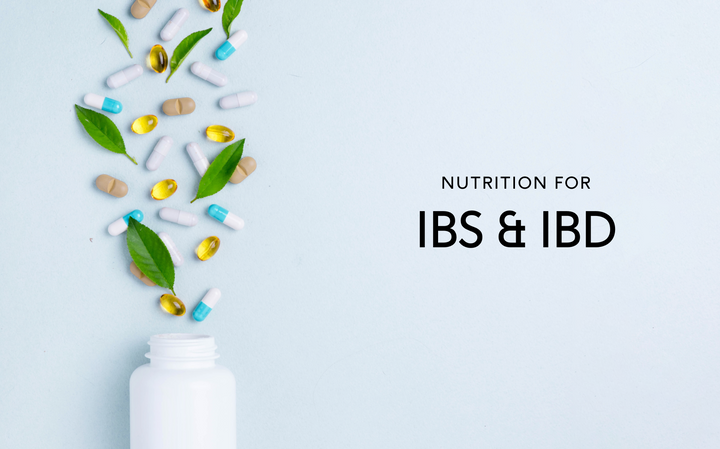






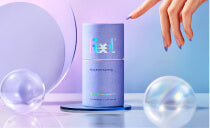

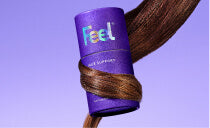




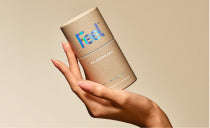







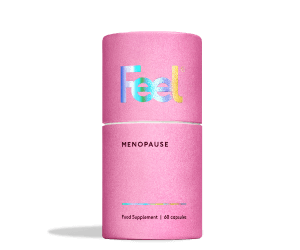

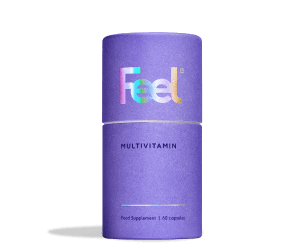


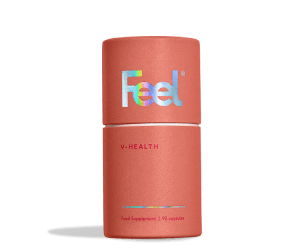

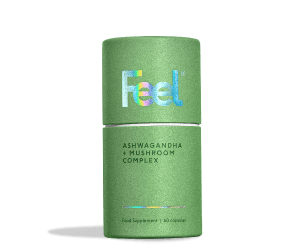
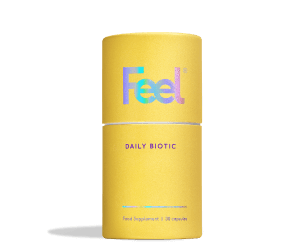
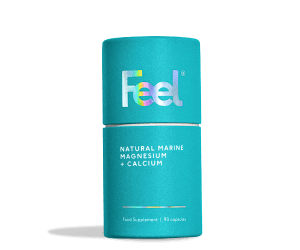


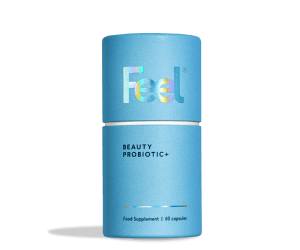
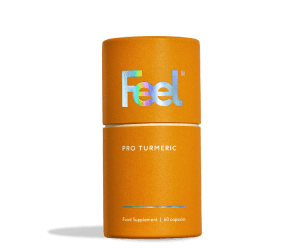
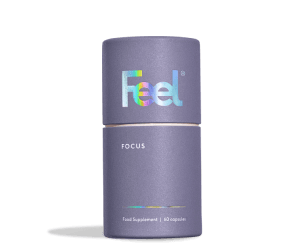
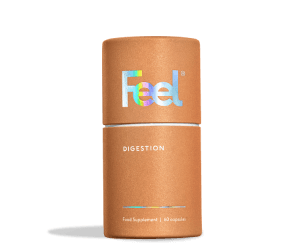

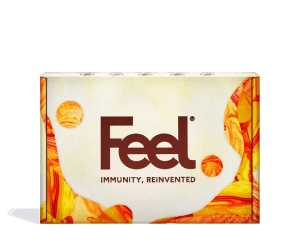

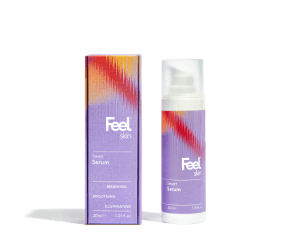



 Back
Back

